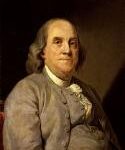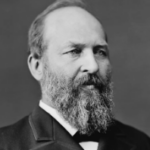Unit 9 - The Management of Fiat Currency
Learning Objective: Understand and be able to explain who manages fiat currency and how it is managed.



Unit Outline
9.1 The Management of Fiat Currency
9.2 The Federal Reserve System Functions
9.3 Members of the Federal Reserve Board
9.4 Who owns The Federal Reserve
9.5 The Federal Reserve’s Dual Mandate
9.6 How Well is The Fed Doing with its Other Responsibilties?
9.7 The Federal Reserve and Monetary Policy
9.8 The Federal Open Market Committee (FOMC)
9.1 The Management of Fiat Currency
Fiat currency in the United States is managed by the Federal Reserve—often referred to as “the Fed.”
What is the Federal Reserve?
“The Federal Reserve System… is the central bank of the United States. It was created by Congress to provide the nation with a safer, more flexible, and more stable monetary and financial system.” (Federal Reserve Act, 1913)
Key Idea:
The price of money—expressed through interest rates—is the most important price in any economic system.
- Free Market System: Prices, including interest rates, are determined by supply and demand.
- Centralized System: Prices, including interest rates, are set by planners and committees (e.g., The Federal Reserve, especially The Federal Open Market Committee).
The U.S. Monetary System Today:
The Federal Reserve uses centralized planning to fix the price of money, rather than allowing market forces to determine its value.
9.2 The Federal Reserve System Functions
The Federal Reserve has four main functions:
- Conduct Monetary Policy – Influences money supply and credit to pursue full employment and stable prices.
- Supervise and Regulate Banks – Ensures the safety and soundness of financial institutions.
- Maintain Financial Stability – Prevents systemic risks that could lead to crises.
- Provide Financial Services – Manages payments systems and serves as a bank for banks.
Additional Role:
The Federal Reserve acts as a lender of last resort during financial crises to prevent collapses. (e.g., 2008 Financial Crisis bailout).
9.3 Members of the Federal Reserve Board
The Board of Governors has 7 members, each appointed by the President and confirmed by the Senate for 14-year terms.
Chairperson and Vice-Chairs:
- Appointed for 4-year terms from within the Board.
- Current Chair: Jerome Powell (appointed in 2018).
Jerome Powell’s Background:
- Earned an AB in politics from Princeton University in 1975 and a law degree from Georgetown University in 1979
- Former partner at The Carlyle Group.
- Served in the Treasury Department under President George H.W. Bush.
- Advocates for moderate monetary policies.
9.4 Who owns The Federal Reserve
The Federal Reserve is a hybrid entity—both public and private:
- The Board of Governors is a public agency.
- The 12 Federal Reserve Banks are privately owned by member banks.
- Member banks hold stock in the system and earn dividends.
This structure raises questions about independence and conflicts of interest since private banks benefit from Fed policies. (https://www.stlouisfed.org/in-plain-english/who-owns-the-federal-reserve-banks)
9.5 The Federal Reserve’s Dual Mandate
The Fed’s dual mandate requires it to:
- Maintain price stability (control inflation).
- Promote maximum sustainable employment.
How Does the Fed Measure Success?
- Price Stability: Targets 2% inflation.
- Employment: Targets low unemployment rates.
9.6 How Well is the Fed Meeting Its Responsibilities?
9.6.1 Price Stability:
Are prices stable (not changing or fluctuating) or unstable (changing or fluctuating)?
9.6.2 Unemployment:
Unemployment rates measure the percentage of people in the labor force who are not working but actively seeking work. However, not all unemployment is counted the same way.
U-3 Unemployment Rate (Official Rate):
- Definition: The most widely reported unemployment statistic.
- What It Measures:
- Includes only individuals who are actively seeking work within the past 4 weeks.
- Excludes those who’ve stopped looking for work (discouraged workers).
- Does not account for people working part-time but wanting full-time jobs (underemployed workers).
- Criticism:
- Downplays economic distress by ignoring millions of workers who have given up hope or are underemployed.
- Politicians and the media often emphasize U-3 because it paints a rosier picture of the economy.
U-6 Unemployment Rate (Broadest Measure):
- Definition: Provides a more realistic picture of unemployment.
- What It Measures:
- Includes discouraged workers—those who want jobs but have stopped looking.
- Includes marginally attached workers—those who want jobs but haven’t looked recently.
- Includes underemployed workers—those stuck in part-time jobs but seeking full-time work.
- Why It Matters:
- U-6 captures hidden unemployment that U-3 ignores.
- Often double the U-3 rate, exposing a weaker labor market than headlines suggest.
Why the U-3 Rate Misleads:
- Treats people who’ve stopped looking for work as if they no longer exist.
- Masks underemployment by counting part-time workers as fully employed.
- Allows policymakers to claim the economy is stronger than it really is by focusing only on active job seekers.
Example from 2023:
- Per the chart below, the U-3 unemployment rate reported by the Bureau of Labor Statistics (BLS) was 3.8%—suggesting a healthy economy.
- However, the U-6 unemployment rate was 7.2%, revealing that millions were either underemployed or discouraged workers excluded from U-3.
- This gap demonstrates why relying solely on headline unemployment numbers can distort economic reality.

- According to ShadowStats.com, the unemployment rate is 25%.
9.6.3 Financial Stability:
Despite the Fed’s role as a stabilizer, crises persist:
- 2008 Financial Crisis and Great Recession – Mortgage-backed securities collapsed.
- 2023 Banking Crisis – Bank runs on Silicon Valley Bank and others.
9.7 The Federal Reserve and Monetary Policy
The definition of monetary policy: A set of tools that a nation’s central bank has available to promote sustainable economic growth by controlling the overall supply of money that is available to the nation’s banks, its consumers, and its businesses.
The Fed primarily manages monetary policy using three tools:
- Reserve Requirements – Set the minimum reserves banks must hold. (Reduced to 0% in 2020).
- Open Market Operations (OMOs) – Buying and selling government bonds to control liquidity.
- Interest Rates – Adjusts the Federal Funds Rate to influence borrowing and spending.
9.8 The Federal Open Market Committee (FOMC)
The FOMC is the Fed’s policy-making body.
- 12 Members (7 Governors + 5 Reserve Bank Presidents).
- Meets 8 times per year to set interest rates and manage money supply.
Goal:
Criticism:
Economists argue that centralized management cannot match the efficiency of free markets.
9.9 Quantitative Tightening
Definition:
QT is the opposite of Quantitative Easing (QE). It reduces the money supply by selling Treasury bonds or allowing them to mature without replacement.
Purpose:
- Reduce inflation by removing liquidity from the economy.
- Raise interest rates to slow borrowing and spending.
Effects:
- Higher borrowing costs for businesses and consumers.
- Slower economic growth and job losses.
Key Insight:
After years of easy money policies and a $9 trillion balance sheet, QT may cause economic pain—demonstrating there is no free lunch in monetary policy.
Conclusion:
The Federal Reserve wields enormous influence over the U.S. economy through its management of fiat currency.
While it claims to promote stability, critics argue that its centralized policies often exacerbate economic cycles—creating booms and busts instead of preventing them.
Monetary policy tools, such as interest rates and open market operations (OMOs), attempt to smooth the business cycle, but the results remain inconsistent and controversial.
Furthermore, the expansionary policies of the Federal Reserve—such as quantitative easing and near-zero interest rates—have been linked to rising wealth inequality. By inflating the value of financial assets, these policies disproportionately benefit investors and asset holders while eroding the purchasing power of wages and savings, leaving middle- and lower-income households struggling to keep pace.
This raises critical questions about whether the centralized management of money serves the public interest or simply reinforces economic disparities and concentrated wealth.
Key Reflection Questions:
- Does the centralized control of fiat currency create instability rather than prevent it?
- Should a free market monetary system replace centralized management of money?
Are we heading toward a financial crisis due to over-reliance on fiat currency creation?





